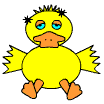- Use personal protective equipment that provides barrier protection including gloves, gowns, safety glasses, and/or face shields to avoid dermal and mucous membrane contact with blood and other tissues.
- If conducting necropsies, wear gloves that prevent cutting injuries, such as stainless steel mesh gloves, in addition to medical examination gloves.
- Wash hands and other skin surfaces with soap and water immediately after contact with blood or other tissues, after removing gloves, and before leaving the workplace.
- Minimize the generation of aerosols.
Handle sharp instruments carefully during use.
- Use medical devices with safety features when available to avoid sharps-related injuries. Avoid recapping needles.
- Dispose of sharp instruments carefully after use.
- Report to the supervisor all needlestick and other sharps-related injuries.
- Report to the supervisor any laboratory incidents or accidents involving possible WNV exposure.
- Report to the supervisor any symptoms consistent with WNV infection.
|
 In addition, the general public and especially children, should be discouraged from handling, found, sick or dead animals. Bites or accidental contamination by blood or body fluid can result in disease transmission. In the event of finding a sick or dead animal, the local animal control agency should be notified. Animal control personnel are trained in the safe management these circumstances and will initiate appropriate surveillance protocols if warranted.
In addition, the general public and especially children, should be discouraged from handling, found, sick or dead animals. Bites or accidental contamination by blood or body fluid can result in disease transmission. In the event of finding a sick or dead animal, the local animal control agency should be notified. Animal control personnel are trained in the safe management these circumstances and will initiate appropriate surveillance protocols if warranted.